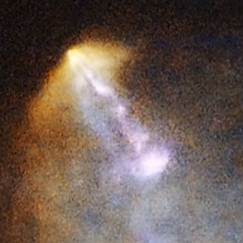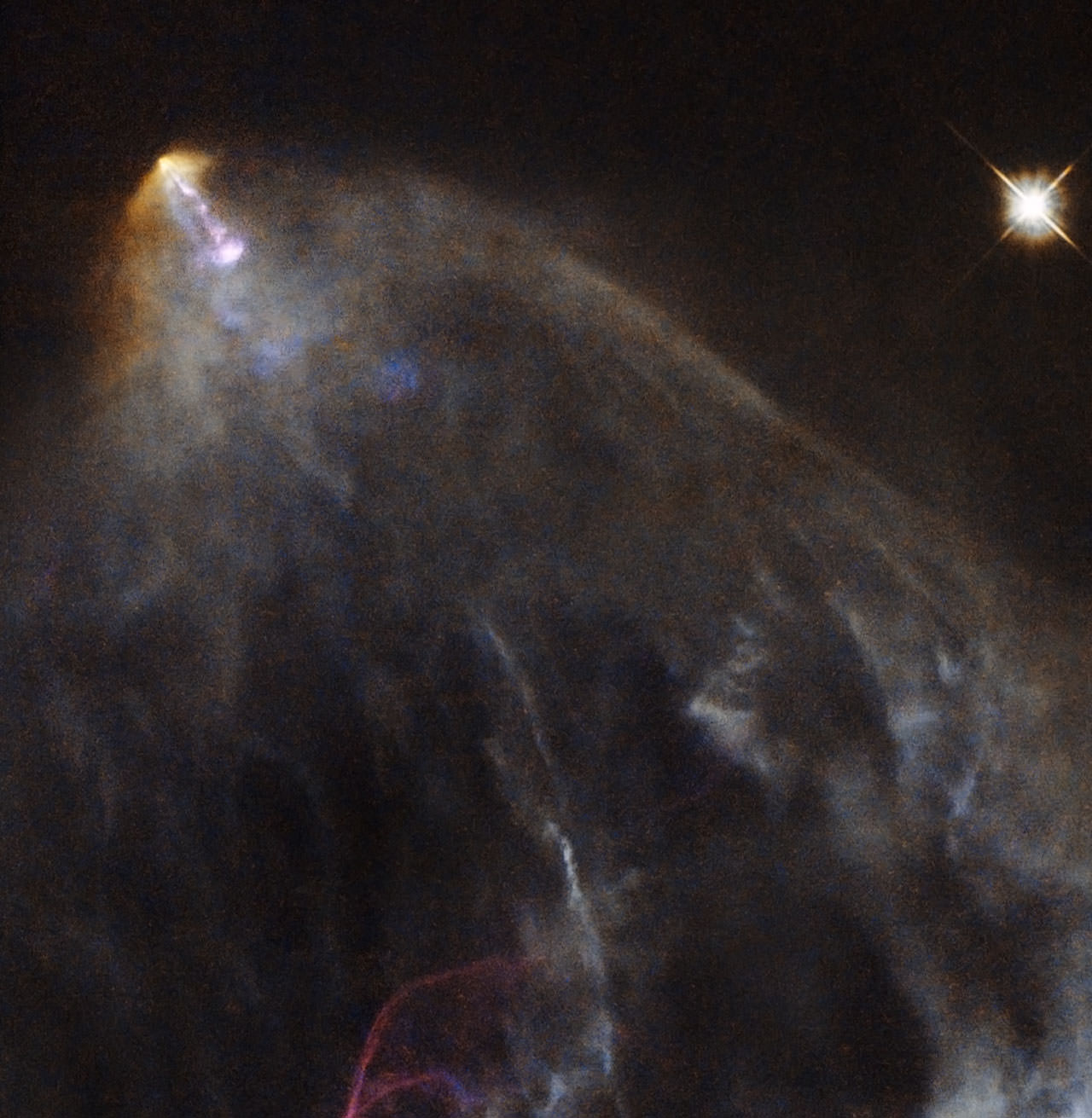Like very young humans, very young stars also tend to make a big mess out of the stuff around them — except in the case of stars it’s not crayon on the walls and Legos on the floor (ouch!) but rather huge blasts of superheated material that are launched from their poles far out into space.
The image above, acquired by the Hubble Space Telescope, shows one of these young stars caught in the act.
HL Tau is a relatively newborn star, formed “only” within the past several hundred thousand years. During that time it has scooped up vast amounts of gas and dust from the area around itself, forming a disc of hot, accelerated material that surrounds it. While most of this material eventually falls into the star, increasing its mass, some of it gets caught up in the star’s complex, rotating magnetic fields and is thrown out into space as high-speed jets.
As these jets plow thorough surrounding interstellar space they ram into nearby clouds of molecular gas, ionizing the material within them and causing them to glow brightly. These “shocks” are known as Herbig-Haro objects, after researchers George Herbig and Guillermo Haro who each discovered them independently in the early 1950s.

In this Hubble image HH 151 is visible as a multiple-lobed cone of material fired away from HL Tau, with the leftover glows from previous outbursts dimly illuminating the rest of the scene.
The material within these jets can reach speeds of several hundred to a thousand kilometers a second. They can last anywhere from a few years to a few thousand years.
HH 151 is embedded within the larger star-forming region LDN 1551, located about 450 light-years away in the constellation Taurus. LDN 1551 is a stellar nursery full of dust, dark nebulae, newborn stars… and Herbig-Haro objects like HH 151.
(Hey, if baby stars are going to make a mess at least they can do it in the nursery.)

